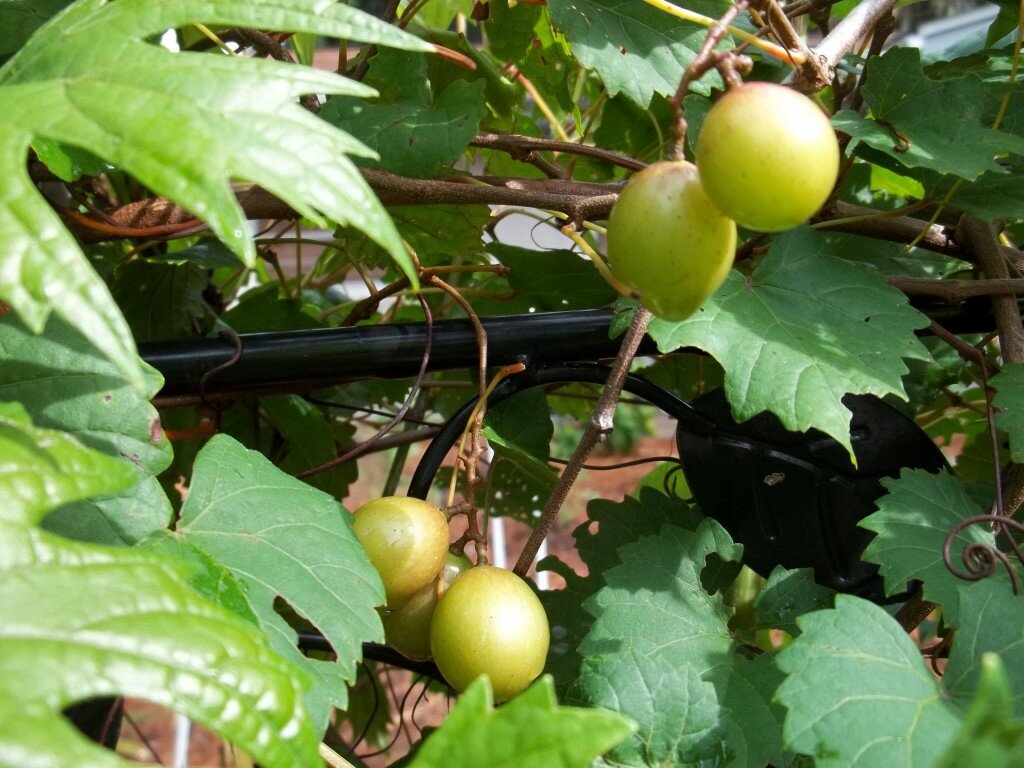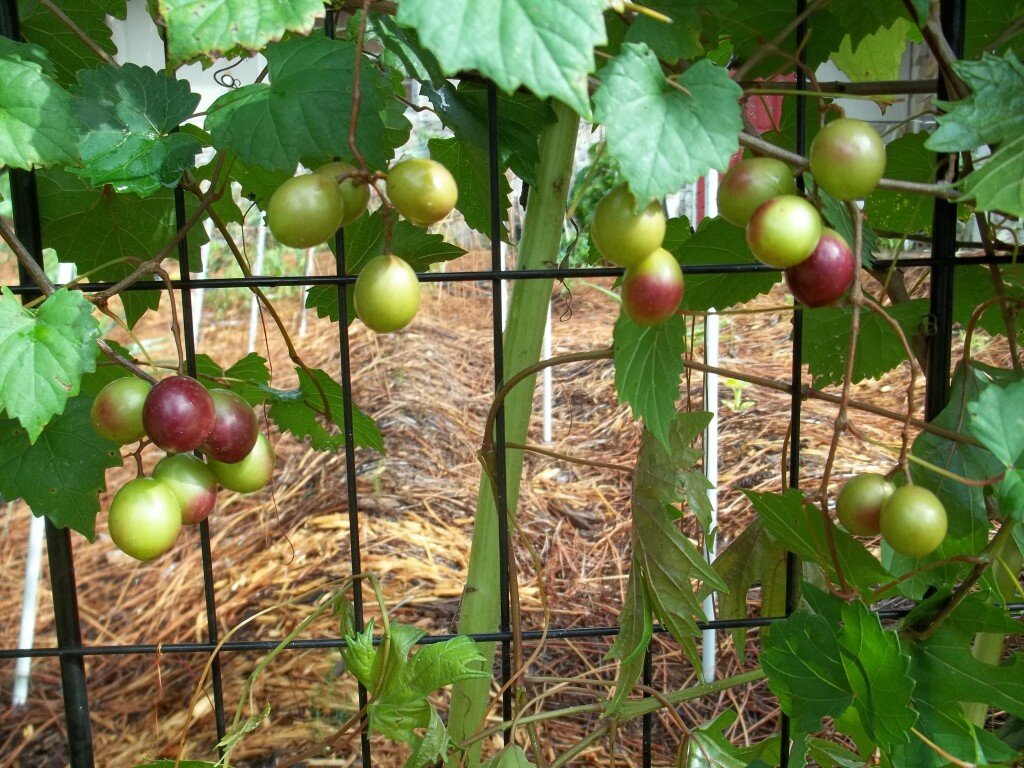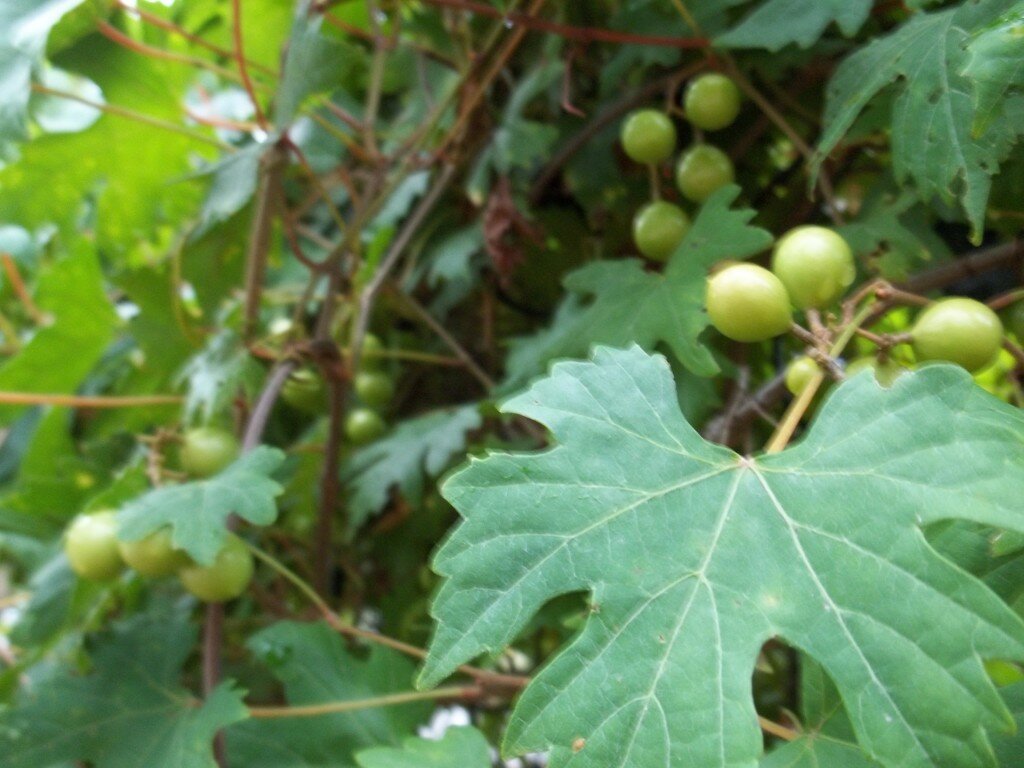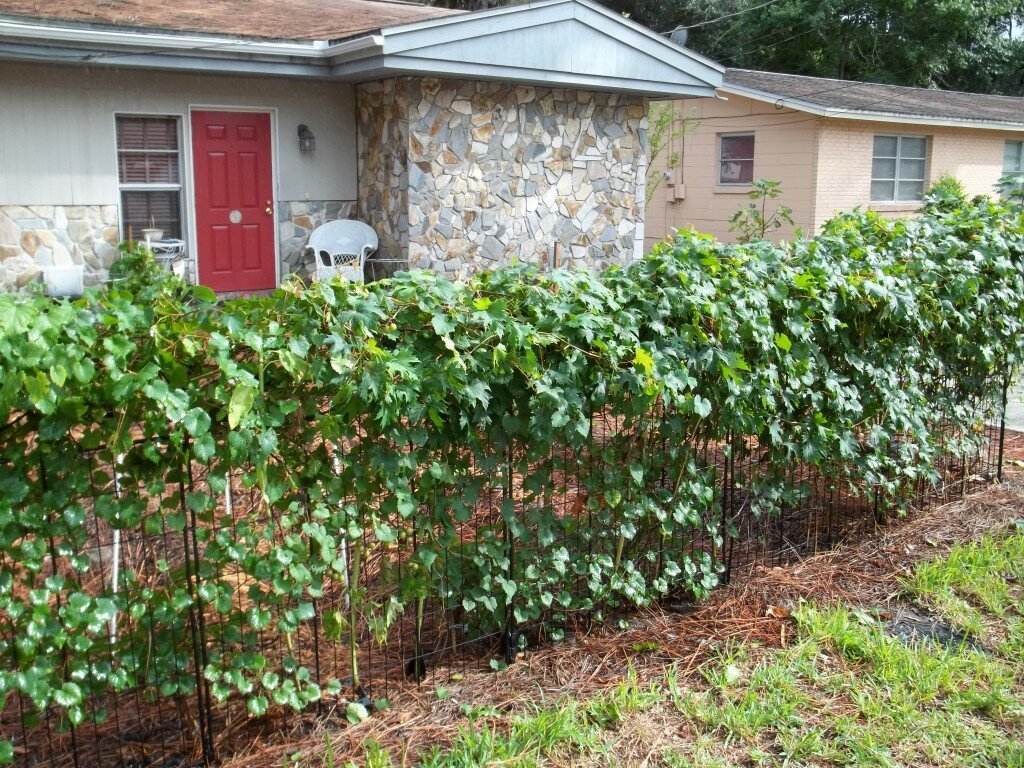Following yesterday’s post, a dear high-school friend, now living out in Corona, California inquired about the particular variety of grapes I am growing.
He guessed correctly in that these particular grapes are the Muscadine variety.
They are native here in the Southeast.
What’s great about this variety is that their thick skin makes them naturally resistant to disease, fungi, and insects. This is extremely helpful, as I do not use any type of pesticides or herbicides. My growing methods are strictly organic!
If you are familiar with the theory behind organic eating, you probably already know that poison-free produce is non-negotiable when you intend to consume the exterior or skin.
The skin of the Muscadine Grape is where the majority of antioxidant power is stored, so it makes sense to keep it safe for consumption!
Another interesting fact about Muscadine Grapes is that they contain a unique balance of phytonutrients that are virtually absent in other grapes. This can be credited to their extra set of chromosomes containing genes that allow them to produce the extra nutritional value.
Muscadine Grapes are nutritionally superior to Red Table Grapes. The fruit’s antioxidant levels has been measured as high as 6,800 per 100 grams. Red Grapes only measure around 739. The skin alone has about 6-8 times as much antioxidant capacity as whole blueberries which are notorious for being a “Superfood”. In fact, these grapes are technically considered a part of the berry family.
Muscadine Grapes also contain a large amount of natural resveratrol and ellagic acid which are cancer-fighting properties.
Here’s a table (not-exhaustive) of antioxidants and anti-inflammatory agents contained within the fruit, courtesy of MuscadineNaturals.com:
|
|
|
I am also growing the Catawba variety, but the vines are just in their first growing season, so they are not yet mature enough to produce.
I am excited to see what the Muscadine Grapes taste like. They are still turning in color and resistant to pressure, so it may be awhile.
Have you ever tasted Muscadine Grapes?
What are your favorite varieties of grapes?
Resources:
http://www.crfg.org/pubs/ff/muscadinegrape.html
Dearing, Charles. Muscadine Grapes. U.S. Dept. of Agriculture, Farmers’ bulletin no. 1785. 1947
Dearing, Charles. New Muscadine Grapes. U. S. Dept. of Agriculture, Circular no. 769. 1948.
Facciola, Stephen. Cornucopia: a Source Book of Edible Plants. Kampong Publications, 1990. pp. 393-395.
http://www.muscadinenaturals.com/resveratrol_piceatannol.htm








Yes, black grapes are yummy! I am glad to hear that organic wines are becoming more widely available.
I love black grapes! Is that such a thing? I’m prettt sure they’re black! Oh yes, I love grapes in wine. i’ve been hooked on a delicious wine featuring organix grapes, and it seems more potent and delicious than the pesticide laden alternative.
i’ve been hooked on a delicious wine featuring organix grapes, and it seems more potent and delicious than the pesticide laden alternative.
So many typos in that!